Planning for the Poon Hill trek
‘Mountains are the beginning and the end of all natural scenery.’ – John Ruskin.
Trekking in Nepal – a bucket list item!
The primary reason to visit Nepal is invariably to go trekking among the lofty Himalayan peaks. Walking in the company of some of the world’s highest mountains is definitely one of those bucket list items. It was for me anyway. But I was nervous before setting off on the Poon Hill Circuit. What if my planning wasn’t right? What if we got lost? Had I packed enough clothes? Where would we stay each evening?
We chose to complete the five day, four night Poon Hill Circuit in the Annapurna Region of the Himalayas. Try as I might, I couldn’t find much information anywhere when it came to planning for the Poon Hill Trek. This guide aims to help close that gap.
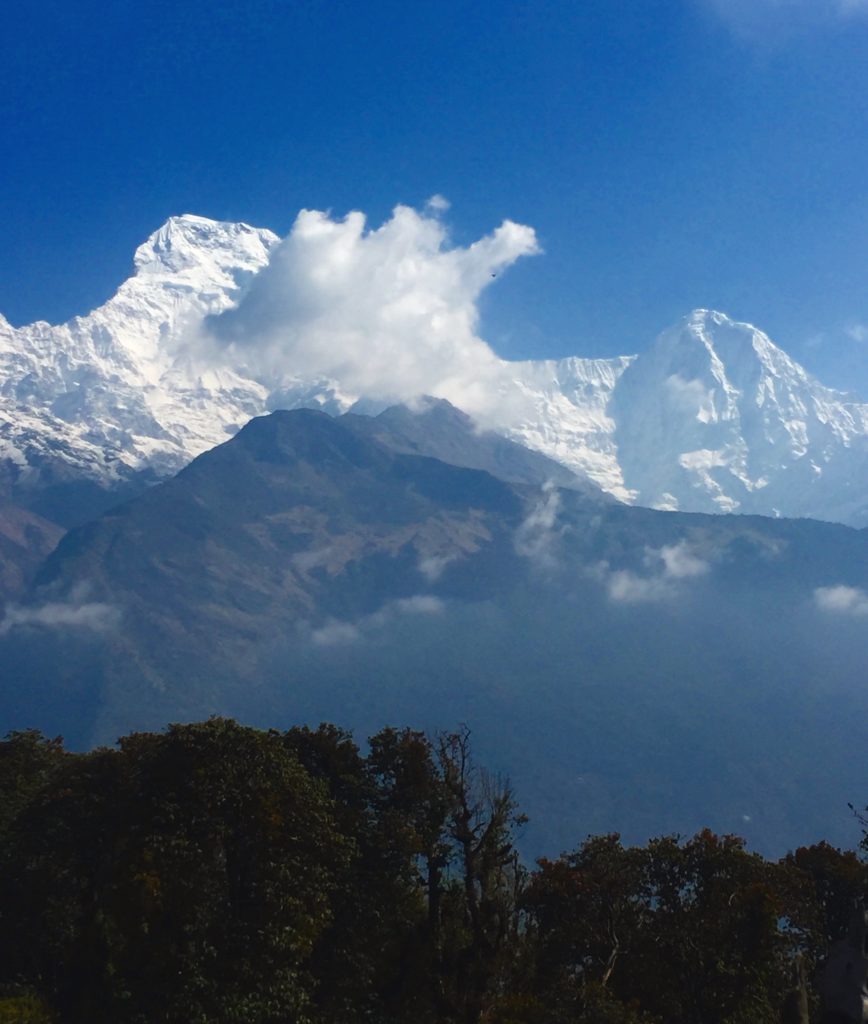
Why choose the Poon Hill Circuit?
Simply? Because it’s literally breathtaking.
I saw views and vistas every single day for five days that made me stop and stare. The scenery is utterly beautiful and also incredibly moving. As I climbed Poon Hill itself on the morning of the third day, I was overwhelmed by emotion as the dawn paled to grey and the mountains slowly revealed themselves. It was a remarkable feeling to witness the sunrise that morning – I felt incredibly privileged to be there.
More practically, the Poon Hill Circuit is one of the shorter treks you can do in Nepal. It is also one of the simpler and easier ones. The maximum height reached is 3,200 metres which means there is much less risk of altitude sickness. Additionally, the path is well marked, making it difficult to get lost. There are villages at good intervals along the route and plenty of options available for accommodation each evening. Staying in tea houses each night means that you won’t need camping equipment and can therefore carry less gear.
The five days I spent hiking the Poon Hill Circuit with my friends were some of the best days I’ve ever had. I was mentally and physically challenged every single day. I saw some of the most beautiful landscapes I’ve ever witnessed. In short, I cannot recommend the trek highly enough.
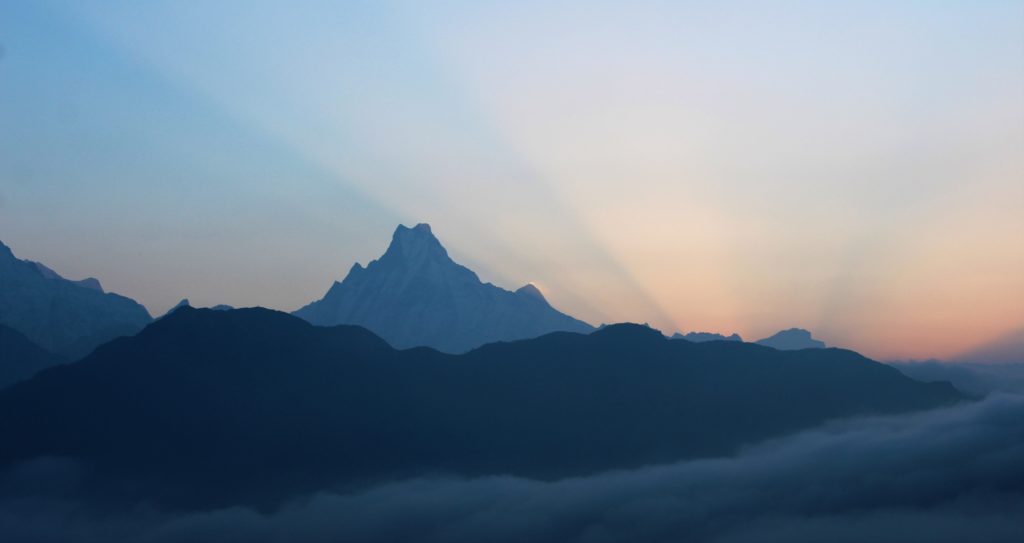
Practicalities to Consider Before Trekking
Fitness
The Poon Hill Circuit is perfect for anyone of moderate fitness. When I completed the trek, I was of a low-moderate fitness level. Although I struggled occasionally, I never thought I literally couldn’t do it.
There is a lot of ascending and descending and a lot of steps! For me, it was often more of a mental challenge to push myself one step further and get up the hill. I’d recommend doing some training prior to the trek, if you can. Some hill hiking or gym sessions beforehand would definitely have benefited me!
Trekking Permits
Before you hike the Poon Hill Circuit, you need two permits. One is the Annapurna Conservation Permit (ACAP) and the other is the Trekkers Information Management Systems Permit (TIMS).
ACAP costs approximately NRS 3000 (£20) and your contribution through purchasing this permit helps protect the Annapurna Region and promote conservation in the area.
TIMS costs approximately NRS 1000 (£7) per person if you’re trekking as part of an organised group. If you’re trekking alone (without a guide or porter), the cost is NRS 2000 (£13.50). This permit is for your own safety. At each checkpoint along the route, your permit is shown to officials who register you. If you go missing or have an accident, the authorities will be more likely to find you as they can track your registrations and locate your whereabouts more easily.
Before you go to Nepal, I would recommend purchasing a set of passport photos to take with you. Both permits require passport size images and I wouldn’t recommend wasting time in Nepal trying to find somewhere to get those photos.
I trekked without a guide or porter, which meant I needed to present myself for registration at the permit counter in Pokhara. We got our permits on the morning we set off on our trek. The whole process took about an hour. Alternatively, you could get them beforehand in Kathmandu. The addresses of both offices are:
- Nepal Tourism Board (NTB), Exhibition Road, Bhrikuti Mandap, Kathmandu
- Nepal Tourism Board (NTB), Dam Side, Pokhara
Should you trek alone or in a group?
My friends and I chose to trek alone, without guides or porters. We weren’t going to be carrying enough gear to necessitate the use of porters. As we were a group of four, we also felt fairly confident to trek without a guide. If I had been considering trekking alone in Nepal, I may have hired a guide.
It’s all down to personal preference in the end. Although we briefly considered hiring a guide, we managed absolutely fine without one. We felt it was almost impossible to get lost on this route! However, others may gain confidence from having a guide with them.
With regards to a porter, I never even considered hiring one as I never ever thought I’d have enough gear to warrant it. Again, it’s personal preference. I’m quite happy living without some creature comforts for a few days and just taking the bare minimum. Others may not be and may wish to carry more gear.
Starting and Finishing the Trek
We hired a private taxi to take us to the start of the trek at Birethanti. The drive took a couple of hours. Driving in Nepal is a nerve wracking experience. The roads are generally poor, winding around towering mountains and clinging to cliff edges with plunging drops to one side. The drive to Birethanti was no exception!
We prearranged a taxi back to Pokhara and organised a time to meet it in the early afternoon on the final day of our hike. We were a little late, but the driver kindly waited.
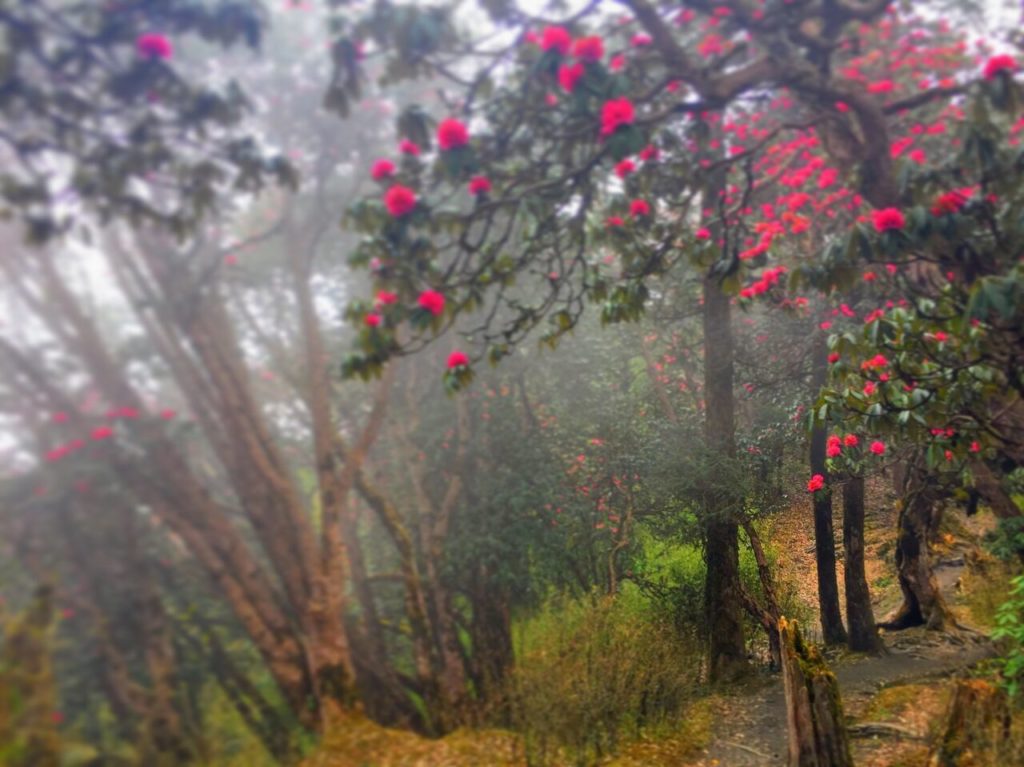
The Poon Hill Circuit Route
Day One
Day One saw us hiking the dusty distance between the start point at Birethanti to the village of Tikhedunga. Tikhedunga is the gateway to the notorious staircase of 3,000 steps up to Ulleri and we had intended to complete this on day one. However, we started the trek late and evening was approaching as we arrived in Tikhedunga. My asthma was also playing up. We therefore decided to stay overnight in the village and get up early to complete the staircase before it got too hot the next morning.
Day One Activity Data Says:
6.5 miles hiked
15,200 steps walked
95 floors climbed
Day Two
For me, Day Two saw the start of the trek proper. We were finally off the dusty dirt roads that vehicles can still travel along. About fifteen minutes into the hike, we were faced with our first big ascent – the staircase to Ulleri followed by a continued climb to Banthanti. The vistas began to open up around us and we hiked through gorgeous rhododendron forests, diving between mossy slopes and walking beside gargling streams. The air was clear as crystal and we finally felt a million miles away from it all. We rolled into Ghorepani approximately seven-eight hours later, tired but happy!
Day Two Activity Data Says:
7.7 miles hiked
19,000 steps walked
279 floors climbed
Day Three
Day Three was the toughest day of the trek. We woke at 4am and hiked from Ghorepani at 2,800 metres above sea level to the Poon Hill Summit at 3,200 metres. After sunrise, we descended back to Ghorepani, had breakfast, then climbed to 3,200 metres again as we trekked onwards to Tadapani Village. A hailstorm in the middle of the day almost put pay to us reaching Tadapani that evening, as we took shelter for two hours while the storm passed. However, we pushed on and made it to Tadapani just as darkness finally descended. Exhausted, we ate and went straight to bed!
Day Three Activity Data Says:
9.2 miles hiked
23,000 steps walked
167 floors climbed
Day Four
At Tadapani, I took the decision not to accompany my three friends on a longer hike further into the mountains. I instead chose to take a slightly easier route onwards to Ghandruk Village. This was my favourite day of the trek. The weather was cooler but sunny. I wandered alone along the narrow pathway and the walk was easy going, mainly descending. I arrived in Ghandruk in the early afternoon, found accommodation and spent the rest of the day reading and relaxing.
Day Four Activity Data Says:
5.6 miles hiked
14,000 steps walked
34 floors climbed
Day Five
Day Five wasn’t tough physically, as it was largely descending from Ghandruk to Birethanti. However, it was a mentally difficult day. I was unexpectedly alone (my three friends were delayed and we didn’t meet where we’d planned), it was extremely hot (30+ degrees) and I was walking along a dusty vehicle track with little to no shade. The route was also longer than I’d anticipated. Every time I thought I was nearly at the end, another path opened up and yet more miles needed to be covered. My water ran out, which troubled me until I was able to buy a bottle much further down the hill. When I finally reached Birethanti, just ahead of my friends, I bought two litres of water, a litre of coca cola and two 500ml glasses of mango juice and finished the lot within an hour.
Day Five Activity Data Says:
11.6 miles hiked
27,000 steps walked
27 floors climbed
Where to Stay
You can see the villages where we stopped each evening in the map above. At no point did we book tea houses ahead or plan our overnight accommodation in advance. We turned up, found somewhere we liked the look of and checked in. Nowhere turned us away due to being too full.
When staying in a tea house, you pay for dinner and breakfast, rather than the bed. They’re generally inexpensive and the menus are reasonably extensive, given the inaccessible locations! We ate very well. Noodles, rice, momos (Nepalese dumplings), chips and soups all featured on the menu. Breakfast was usually eggs and bread. As we hiked into higher altitudes, I found my appetite diminishing and I forced breakfast down for energy alone.
As there were four of us, we generally booked two twin rooms. All the accommodation had showers available – a relief at the end of a long day hiking! There are no places I’d recommend over others. It really is a case of turning up and finding somewhere on the day! It’s actually quite liberating!
Packing for the Poon Hill trek
Carrying your gear
I opted for a light load when I completed the Poon Hill Circuit and fit everything I needed into a 30L backpack. If you’re carrying your own load, I’d always recommend packing light. The climbs can be long and steep and you’ll get tired. Why burden yourself with unnecessary stuff? My 30L pack was perfectly adequate for four nights.
To keep order, I use packing cubes. They’re essential items for me when I travel. I used one medium sized packing cube in my 30L bag to store my second set of clothes and other soft items. It’s much easier to keep things in order and I swear you can get more in with a packing cube than if you didn’t use one!
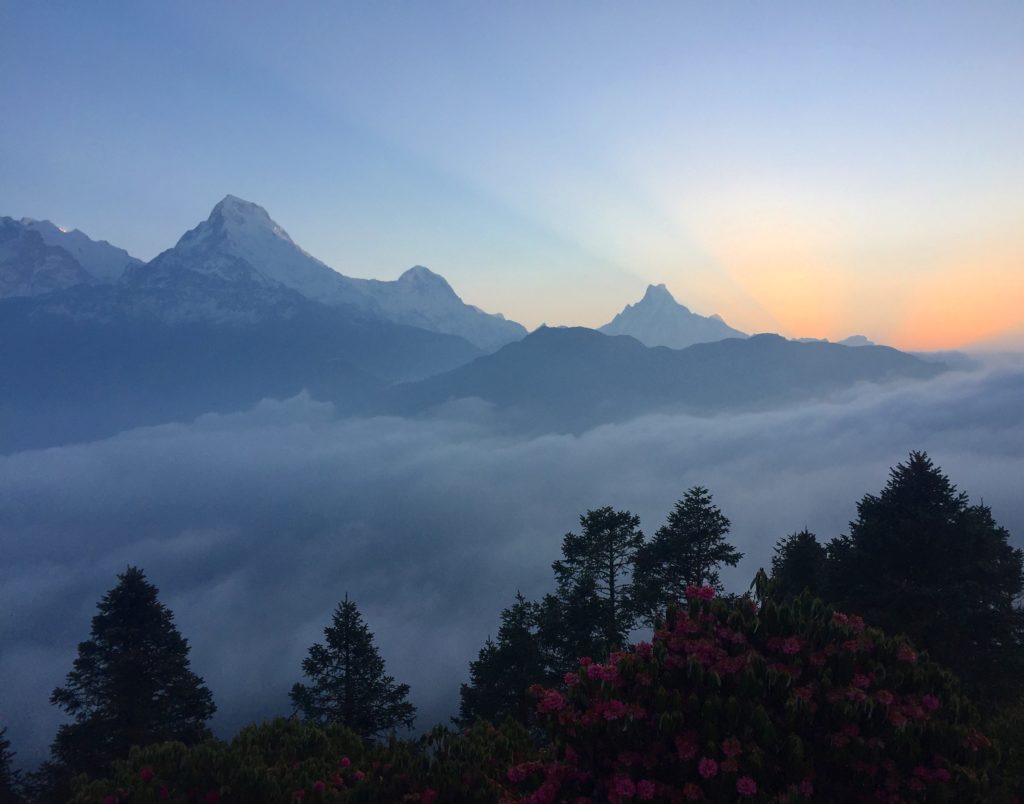
What shoes should you wear?
When you’re spending 7-10 hours a day on your feet, the shoes you wear are vitally important. The Poon Hill Circuit isn’t tough terrain underfoot. You largely follow a clearly marked path without too much scrambling or uneven surfaces.
Really, it is a deeply personal decision as to which shoes you choose to wear. You may want something ultra lightweight with good grip. You might prefer something completely waterproof and sturdy. Or you may want something in between. At the end of the day, bottom line, make sure the shoes you choose are comfortable and don’t rub. My friends used a cross-section of shoes, ranging from a pair of lightweight Nike trainers to heavy duty, sturdy, waterproof hiking boots.
I fit somewhere into the middle in my lightweight Salomon hiking shoes. I bought these years ago in New Zealand and they’ve served me well. I’ve never had a single blister while wearing them and they’re both comfortable and durable. When I hiked in Nepal, the grip was wearing thin on the soles and I felt like they were less trustworthy on slippery surfaces, but other than that, they were fine.
Everything Else
Here’s what I took with me for four nights and five days on the Poon Hill Circuit:
- 3 x t-shirts (one for walking in, one for the evenings, one for sleeping in)
- 2 x pairs of leggings (one for walking in, one for the evenings)
- 1 x thermal base layer (for walking in)
- 1 x medium weight fleece (largely for evening use)
- Trainer socks and underwear for the duration of the trek
- One pair of thick hiking socks that I wore in the evenings
- 1 x pair of shorts (for evenings / sleeping in)
- A lightweight shower-proof jacket (Mac in a Sac)
- A pair of flip flops (for showering in)
- A toiletry bag containing travel sized items – toothpaste, shower gel (I washed my hair with this as well as my body), moisturisor, deodorant, toothbrush, antibacterial gel, wet wipes, bug spray and other miscellaneous items.
- 1 x small first aid kit, containing the basics – plasters, painkillers, antihistamines, small bandages, scissors and other miscellaneous items.
- A roll of toilet paper (essential!)
- A small towel
- 1 x sarong (I take one with me everywhere I go, they have endless uses)
- 1 x sleeping bag liner
- My Kindle
- My phone and charger
- A battery pack to charge electricals
- My camera
- 1 x reusable water bottle with a built-in filter straw + one plastic bottle to store unfiltered water
- A head torch
- Cash and other documents, like my passport and our trekking permits
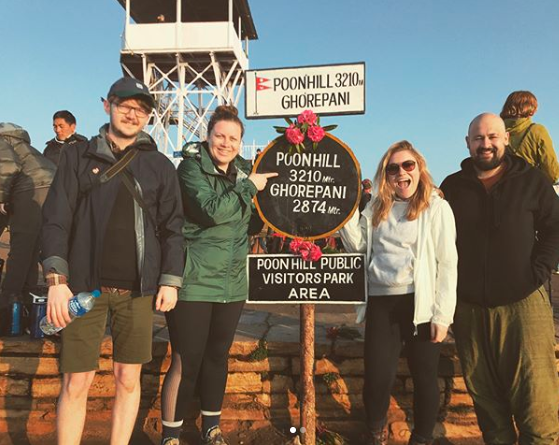
What did I wish I had that I didn’t bring?
My biggest regret was that I didn’t pack one more lightweight jumper or thermal top. It grew cold in the evenings and I often got chilly as I didn’t quite have enough layers on.
I also wish we had brought more shower gel. We shared one bottle between four of us! We hadn’t realised there’d be showers at every tea house, so had anticipated not washing some evenings. As it was, we nearly ran out and were on strict ‘two squirt’ rations.
If I had had a little more room, I might also have considered packing a few lightweight snacks, like cereal bars. When the altitude dulls your hunger and you can’t face another plate of noodles, a small snack would’ve been good to have.
The best item I took with me?
My reusable water bottle with the built-in filter straw was the best item I took with me. It saved money buying bottled water every day, saved using unnecessary plastic and it meant I could refill my bottle from the streams and springs along the way. As I sucked water up through the straw, it simply filtered out any possible nasties!
I also loved having a head torch with me. It was particularly useful when we ascended Poon Hill at 4.30am, in the pre-dawn darkness. My Kindle was invaluable as a source of entertainment before bed each evening.
Other tips before you trek the Poon Hill Circuit
- There is WiFi available in the villages, but we decided to switch off completely and didn’t use the WiFi once during our five day trek. It was relatively expensive given the remote locations and I suspect it would have been poor quality for the price. Far better to enjoy the splendor and beauty right in front of you and live in the present.
- Remember travel insurance! It’s invaluable if something goes wrong. I always buy mine through Compare the Market, where you can check different prices to get the best deal.
- You’re going to be trekking in one of the most beautiful regions in the entire world. Stop, breathe, look around you and enjoy yourself. Although I got quite stressed before our trek and worried we’d get lost or worse, as soon as I hit the trail everything just fell away. Trekking the Poon Hill Circuit turned out to be just what I needed to recharge my batteries and reset. I hope that, with all the advice in this post, you’ll be able to go into the trek and completely relax without any unnecessary stress or worry.
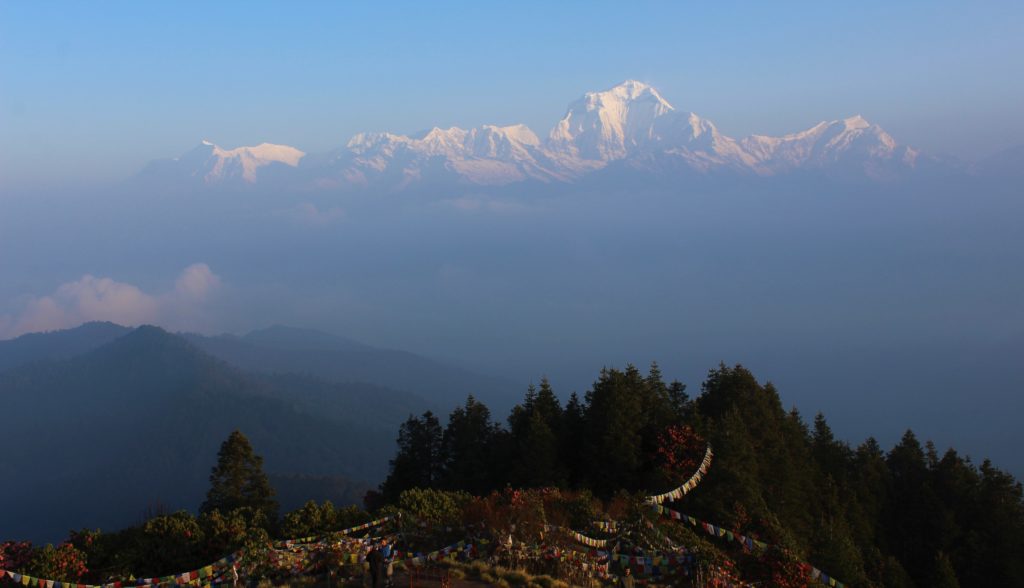
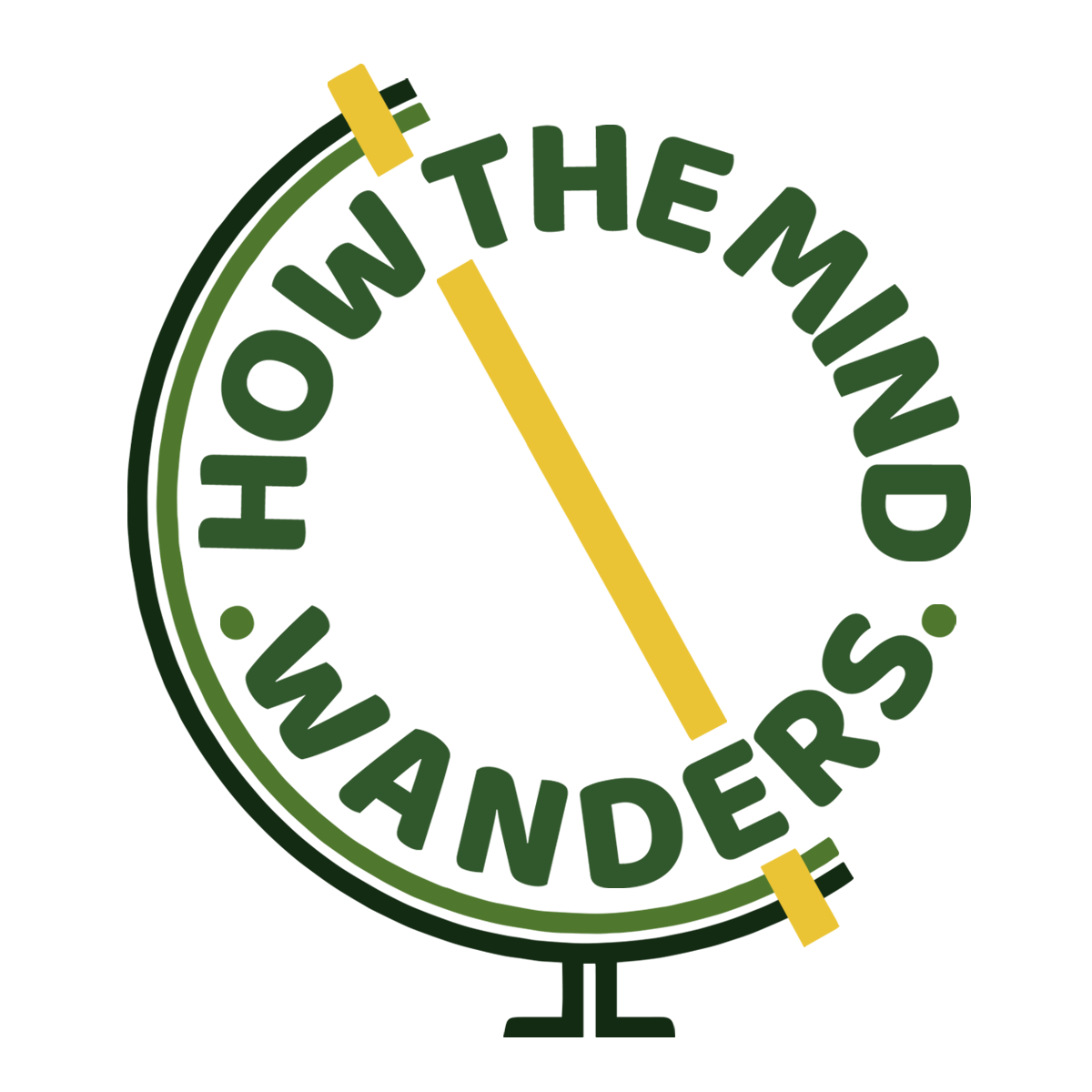
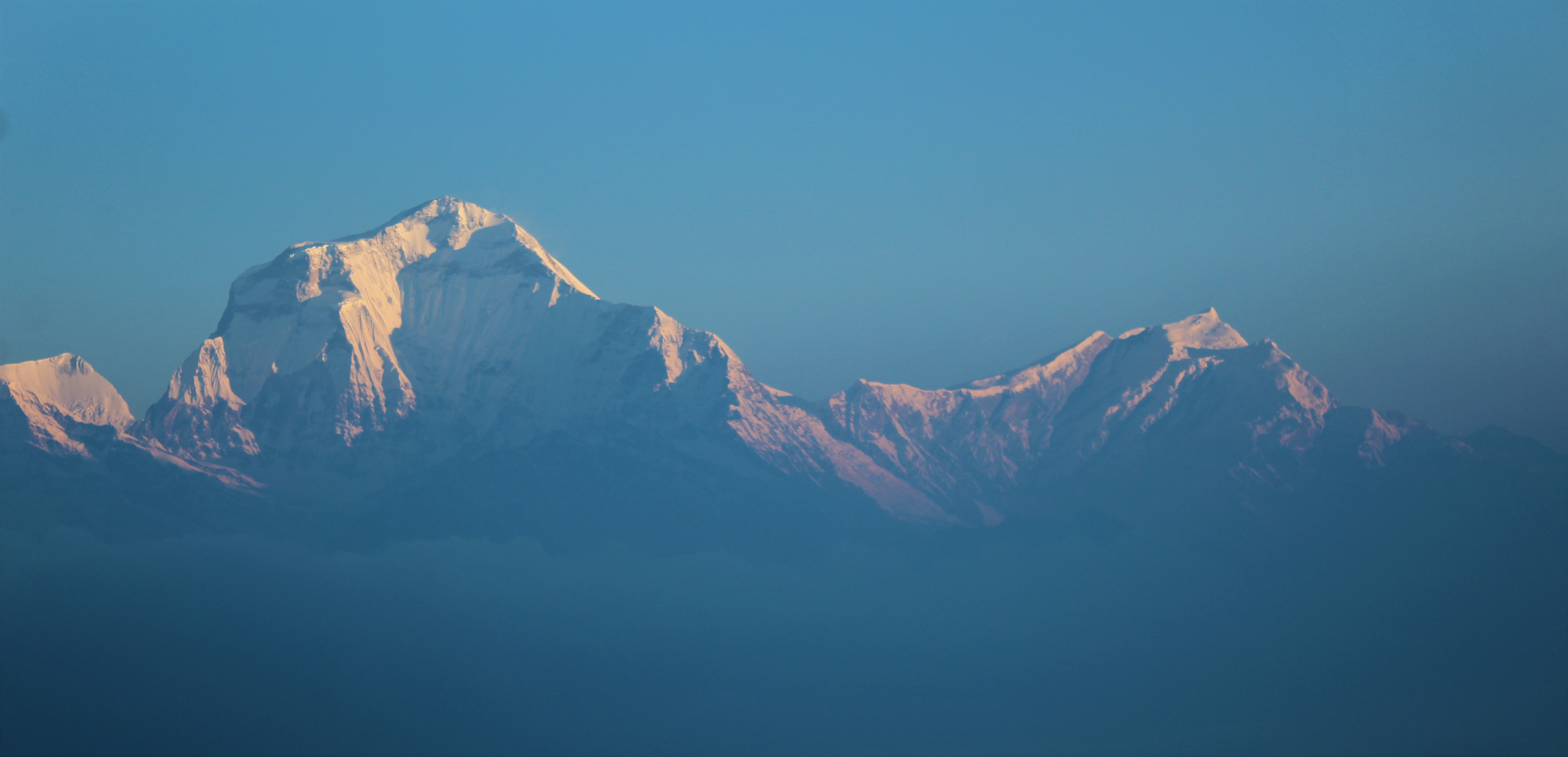

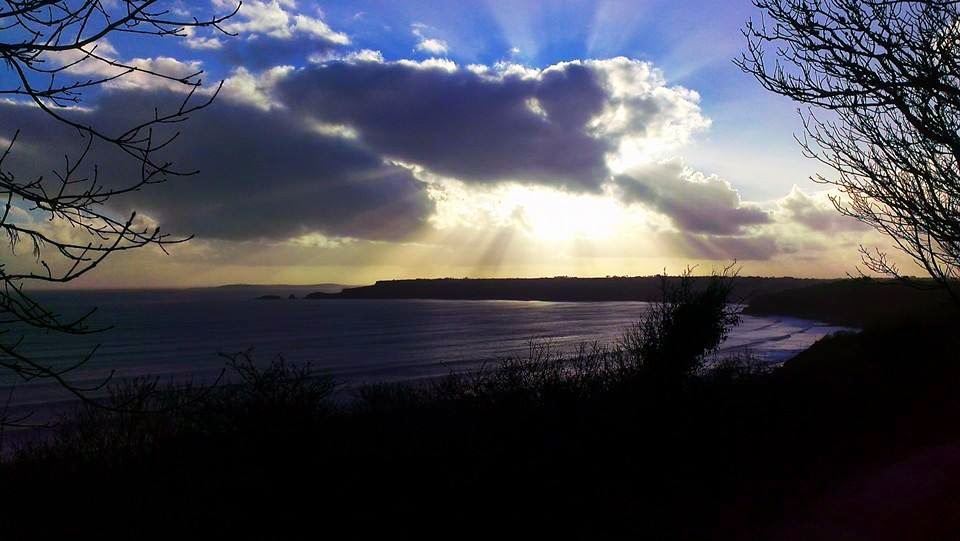
1 thought on “Planning for the Poon Hill trek”